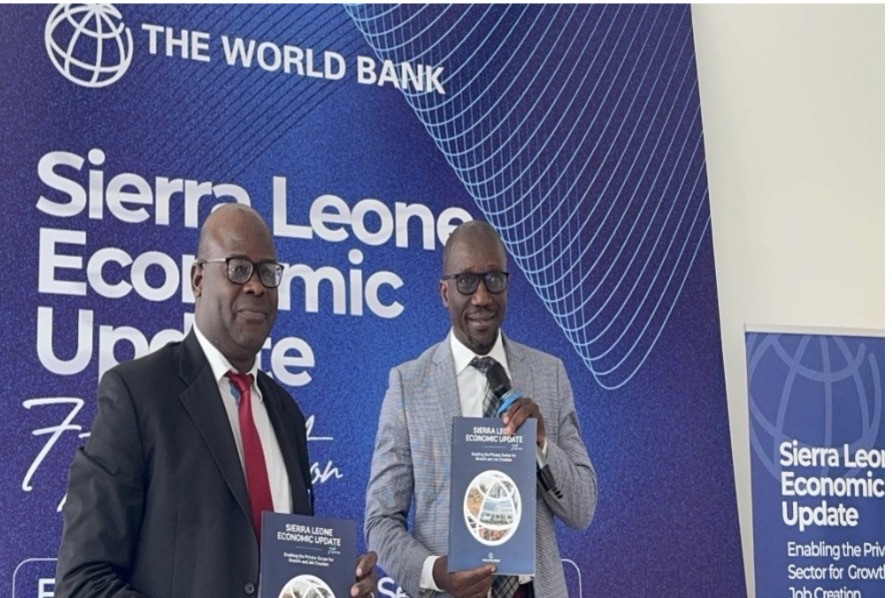Private Sector Reforms Key to Sierra Leone Growth
Sierra Leone projects 4.3% GDP growth in 2025 with private-sector reforms driving resilience; SMEs, agribusiness, and mining underpin expansion while investors monitor SLSX and sovereign bond (SLE) performance.

Sierra Leone’s economy demonstrates notable resilience amid persistent structural challenges, as highlighted in a 7 November 2025 update from the World Bank and regional economic observers. The country’s GDP is projected to grow by 4.3 percent in 2025, rising modestly to 4.6 percent by 2027. This positive trajectory is strategically supported by targeted improvements in agriculture, mining, and service sectors.
Agriculture, which remains the bedrock of the economy, employing roughly 60 percent of the labor force, has benefited from targeted productivity interventions in staple crops and cash crops such as cocoa and palm oil. Meanwhile, mining remains a critical cornerstone of export revenue, with iron ore and rutile production recovering after global commodity price fluctuations in 2024. Services—particularly telecommunications and trade—contribute approximately 18 percent to GDP, reflecting nascent diversification and dynamism in the urban economy.
Mechanistically, the country’s economic resilience is closely tied to ongoing private-sector reforms. Regulatory simplification, accelerated digitalization of business registration, and targeted incentives for Small and Medium-sized Enterprises (SMEs) have begun to foster formalization and attract both domestic and regional investment. Crucially, the government’s robust engagement with international development partners has helped catalyze public-private partnerships in essential infrastructure and energy sectors, resulting in improved access to electricity in both urban and peri-urban areas. These structural reforms are designed not only to stabilize short-term growth but also to create a crucial foundation for sustainable, inclusive development by empowering entrepreneurs and small businesses to expand their operations and integrate more effectively into national and regional value chains.
The macro and sectoral implications are significant, given the country’s historical vulnerability to external shocks. Sierra Leone’s modest public debt ratio of about 54 percent of GDP in 2024 allows necessary room for targeted capital expenditure without creating immediate fiscal stress. Furthermore, inflation averaging 6.2 percent remains manageable, preventing sharp erosion of household purchasing power. Strengthening private-sector capacity is expected to significantly enhance employment creation, particularly among youth, where unemployment rates currently exceed 28 percent.
Increased economic diversification reduces the economy’s perilous dependence on volatile commodity markets, thereby mitigating exposure to external price shocks and supporting a more stable balance of payments, which recorded a small deficit equivalent to about 2.3 percent of GDP in 2024. In effect, decisive private-sector reform is the linchpin for translating macroeconomic stability into tangible, widespread socio-economic benefits.
From a market perspective, investor sentiment is cautiously positive, recognizing the reform momentum. The Sierra Leone Stock Exchange (SLSX) remains relatively illiquid, reflecting the nascent stage of the market. However, early signals suggest that private-equity funds and regional investors are actively exploring opportunities in agribusiness, mining services, and digital finance.
Sovereign bonds (SLE), with yields currently averaging 9.2 percent for ten-year instruments, may become more attractive over time as structural reforms demonstrably reduce default risk and improve the regulatory environment for foreign institutional investors. The expansion of microfinance and FinTech platforms is expected to play a crucial role in supporting SMEs and enhancing financial inclusion, potentially boosting domestic savings rates and expanding the capital base available for future national investment.
Forward risks, however, remain material and cannot be overlooked. First, projected growth remains moderate, and without further acceleration above 5 percent annually, poverty reduction may be unacceptably slow, particularly in rural areas where two-thirds of the population resides. Second, the economy is still acutely vulnerable to climate and commodity shocks; droughts, floods, or sudden global price volatility could rapidly undermine agriculture and mining outputs.
Third, structural reforms require sustained political commitment and administrative capacity; partial implementation or policy reversals could swiftly erode investor confidence and slow the pace of private-sector-led growth. Fourth, despite improvements, access to finance for SMEs remains structurally constrained, limiting the scale at which the benefits of reform can be fully realized.
Looking ahead, measurable indicators over the next 24 months will be crucial for assessing the durability of this turnaround. Key metrics include real GDP growth consistently exceeding 4.5 percent, formal sector employment expansion (target: +50,000 jobs), increase in SME registrations (target: +20 percent annual growth), and improved export diversification, particularly focusing on agricultural value-added products.
Success against these metrics would strongly indicate that Sierra Leone is not only effectively weathering structural constraints but is also decisively positioning itself for inclusive and sustainable growth. Achieving these ambitious targets could catalyze significantly increased foreign investment, enhance fiscal stability, and set a valuable precedent for other smaller African economies seeking to balance resilience, diversification, and aggressive private-sector development.





